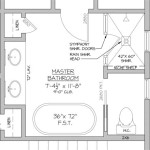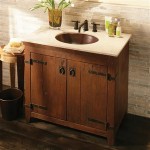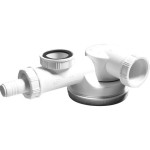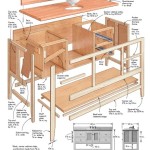Why Is My Bathroom Sink Leaking?
A leaking bathroom sink is a common household problem that can range from a minor annoyance to a serious issue leading to water damage. Identifying the source of the leak is crucial for effective repair and prevention of further complications. This article explores common causes of bathroom sink leaks and provides insights into troubleshooting and resolution.
Identifying Common Leak Locations
Pinpointing the exact location of the leak is the first step in addressing the problem. Bathroom sinks have several potential leak points, each requiring a specific diagnostic approach. A thorough inspection of these areas is essential for accurate problem identification.
Faucet Base: Water accumulating around the base of the faucet may indicate a leak originating from within the faucet assembly itself. This could stem from worn-out O-rings, loose connections, or a faulty faucet cartridge.
Supply Lines: These flexible or rigid pipes connect the water shut-off valves to the faucet. Leaks from supply lines often occur at the connection points due to loose fittings, corroded pipes, or damaged compression rings.
Drain Assembly: The drain assembly, consisting of the drain flange, tailpiece, and P-trap, is a frequent source of leaks. Cracks in the drain components, loose connections, or deteriorated putty around the drain flange can all contribute to water leakage.
Shut-Off Valves: Located beneath the sink, these valves control the water supply to the faucet. Leaks can develop around the valve stem or at the connections between the valve and the water pipes due to corrosion or worn-out packing nuts.
Overflow Drain: Some sinks have an overflow drain designed to prevent water from overflowing. While less common, leaks can occur around the overflow drain due to cracks in the sink or a loose connection.
Causes of Leaks and Troubleshooting Methods
Once the location of the leak has been identified, understanding the underlying cause is necessary for effective repair. This section outlines common causes of leaks in each of the aforementioned areas and provides corresponding troubleshooting methods.
Faucet Leaks:
Worn-Out O-Rings and Washers: Faucets contain small rubber O-rings and washers that create a watertight seal between different components. Over time, these parts can deteriorate due to constant water exposure and wear and tear. This can result in drips from the faucet spout or leaks around the faucet handle.
Troubleshooting: Turn off the water supply to the faucet. Disassemble the faucet assembly according to the manufacturer's instructions. Inspect the O-rings and washers for signs of damage, such as cracks, tears, or flattening. Replace any damaged parts with new ones of the correct size and type. Lubricate the new parts with silicone grease before reassembling the faucet.
Loose Connections: The connections between the faucet spout, handles, and base can sometimes loosen over time due to vibrations or temperature changes. This can create gaps that allow water to leak.
Troubleshooting: Carefully tighten any loose connections using a wrench or adjustable pliers. Be careful not to overtighten, as this can damage the faucet components. If the connection is heavily corroded, you may need to replace the affected parts.
Faulty Faucet Cartridge: Single-handle faucets use a cartridge to control the water flow and temperature. If the cartridge becomes damaged or worn out, it can cause the faucet to drip or leak around the handle.
Troubleshooting: Turn off the water supply to the faucet. Remove the faucet handle and the cartridge retainer clip. Pull out the old cartridge and inspect it for damage. Replace the cartridge with a new one of the same type and size. Reassemble the faucet and test for leaks.
Supply Line Leaks:
Loose Fittings: The connections between the supply lines and the shut-off valves or the faucet can sometimes loosen due to vibrations or temperature changes. This can cause water to leak from the fitting.
Troubleshooting: Tighten the fitting using a wrench or adjustable pliers. Be careful not to overtighten, as this can damage the supply line or the fitting. If the fitting is heavily corroded, you may need to replace the supply line.
Corroded Pipes: Over time, supply lines can corrode due to exposure to water and minerals. Corrosion can weaken the pipe and cause it to leak.
Troubleshooting: Inspect the supply lines for signs of corrosion, such as rust or pitting. If corrosion is present, replace the affected supply lines with new ones made of copper, stainless steel, or PEX.
Damaged Compression Rings: Compression rings are small brass or plastic rings that create a watertight seal between the supply line and the fitting. If the compression ring is damaged or deformed, it can cause a leak.
Troubleshooting: Turn off the water supply to the faucet. Disconnect the supply line from the fitting. Inspect the compression ring for damage. Replace the compression ring with a new one of the same size and type. Reconnect the supply line to the fitting and tighten securely.
Drain Assembly Leaks:
Loose Connections: The connections between the drain flange, tailpiece, and P-trap can sometimes loosen due to vibrations or temperature changes. This can cause water to leak from the connection.
Troubleshooting: Tighten the connections by hand or with adjustable pliers. Be cautious not to overtighten, as this can damage the plastic components. Ensure that the slip nuts are properly aligned and tightened.
Cracked Drain Components: The drain components, such as the tailpiece or P-trap, can crack over time due to age or impact. Cracks can allow water to leak from the drain.
Troubleshooting: Inspect the drain components for cracks. If cracks are present, replace the affected components with new ones of the same size and type.
Deteriorated Plumber's Putty: Plumber's putty is used to create a watertight seal between the drain flange and the sink. Over time, the putty can dry out and crack, allowing water to leak around the drain flange.
Troubleshooting: Remove the drain flange from the sink. Scrape away the old plumber's putty. Apply a fresh bead of plumber's putty around the drain opening. Reinstall the drain flange and tighten securely. Remove any excess putty.
Shut-Off Valve Leaks:
Leaky Valve Stem: The valve stem is the part of the shut-off valve that is used to turn the water on and off. Over time, the packing nut around the valve stem can loosen, causing water to leak from the valve stem.
Troubleshooting: Tighten the packing nut around the valve stem with a wrench. Be careful not to overtighten, as this can damage the valve. If tightening the packing nut does not stop the leak, you may need to replace the packing material inside the valve.
Corroded Connections: The connections between the shut-off valve and the water pipes can corrode over time due to exposure to water and minerals. Corrosion can weaken the connection and cause it to leak.
Troubleshooting: Inspect the connections for signs of corrosion. If corrosion is present, clean the connections with a wire brush and apply a thread sealant. If the corrosion is severe, you may need to replace the shut-off valve and the affected pipes.
Overflow Drain Leaks:
Cracked Sink: If the sink itself has a crack near the overflow drain, water can leak through the crack and down the outside of the sink.
Troubleshooting: Inspect the sink carefully for any cracks. If a crack is present, the sink may need to be repaired or replaced.
Loose Overflow Drain Connection: The connection between the overflow drain and the sink can sometimes loosen, allowing water to leak. This is usually sealed with a rubber gasket.
Troubleshooting: Tighten the connection. If there is still a leak, remove the overflow drain assembly and inspect the rubber gasket for damage. Replace the gasket if necessary and then reassemble the drain.
Preventive Measures for Avoiding Future Leaks
Preventing future leaks is often more efficient and cost-effective than dealing with repairs. Implementing proactive maintenance practices can significantly reduce the likelihood of leaks occurring in the bathroom sink area.
Regular Inspection: Conduct routine inspections of all plumbing components under the sink. Look for any signs of moisture, corrosion, or damage. Early detection of potential problems allows for prompt intervention before leaks develop.
Proper Tightening of Connections: Periodically check the tightness of all connections, including supply lines, drain components, and shut-off valves. Ensure that connections are snug but not overtightened, as excessive force can damage the fittings or pipes.
Use of Quality Plumbing Components: When replacing plumbing components, opt for high-quality materials that are resistant to corrosion and wear. Investing in durable components can prolong the lifespan of the plumbing system and reduce the risk of leaks.
Water Pressure Regulation: High water pressure can put stress on plumbing components, increasing the risk of leaks. Consider installing a water pressure regulator to maintain a consistent and safe water pressure level throughout the plumbing system.
Proper Sealing: Ensure that all connections and joints are properly sealed with plumber's putty or Teflon tape. This helps to create a watertight barrier and prevent water from seeping through gaps or cracks.
Avoid Harsh Chemicals: Refrain from pouring harsh chemicals down the drain, as these substances can corrode plumbing components and lead to leaks. Use drain cleaners sparingly and follow the manufacturer's instructions carefully.
By implementing these preventive measures, homeowners can minimize the risk of bathroom sink leaks and maintain a well-functioning plumbing system.

Bathroom Sink Drain Leaking Around Threads Premier Plumbing Inc

How To Fix A Leaking Bathroom Sink Paschal Air Plumbing Electric

Common Sink Leaks You Could Probably Fix Yourself

Bathroom Sink Drain Leaking Around Threads Premier Plumbing Inc

How To Fix Pipework A Tap Faucet Leaking Under The Sink

5 Reasons Your Faucet Is Dripping Water How To Fix It

How To Fix A Leaking Bathroom Sink Paschal Air Plumbing Electric

4 Ways To Fix A Bathroom Sink Leaking Underneath Fast Easy

Best Ways To Clean Your Bathroom Sink Drain Yourself

Hose Under Your Sink Is Leaking Here S What You Have To Do
Related Posts







